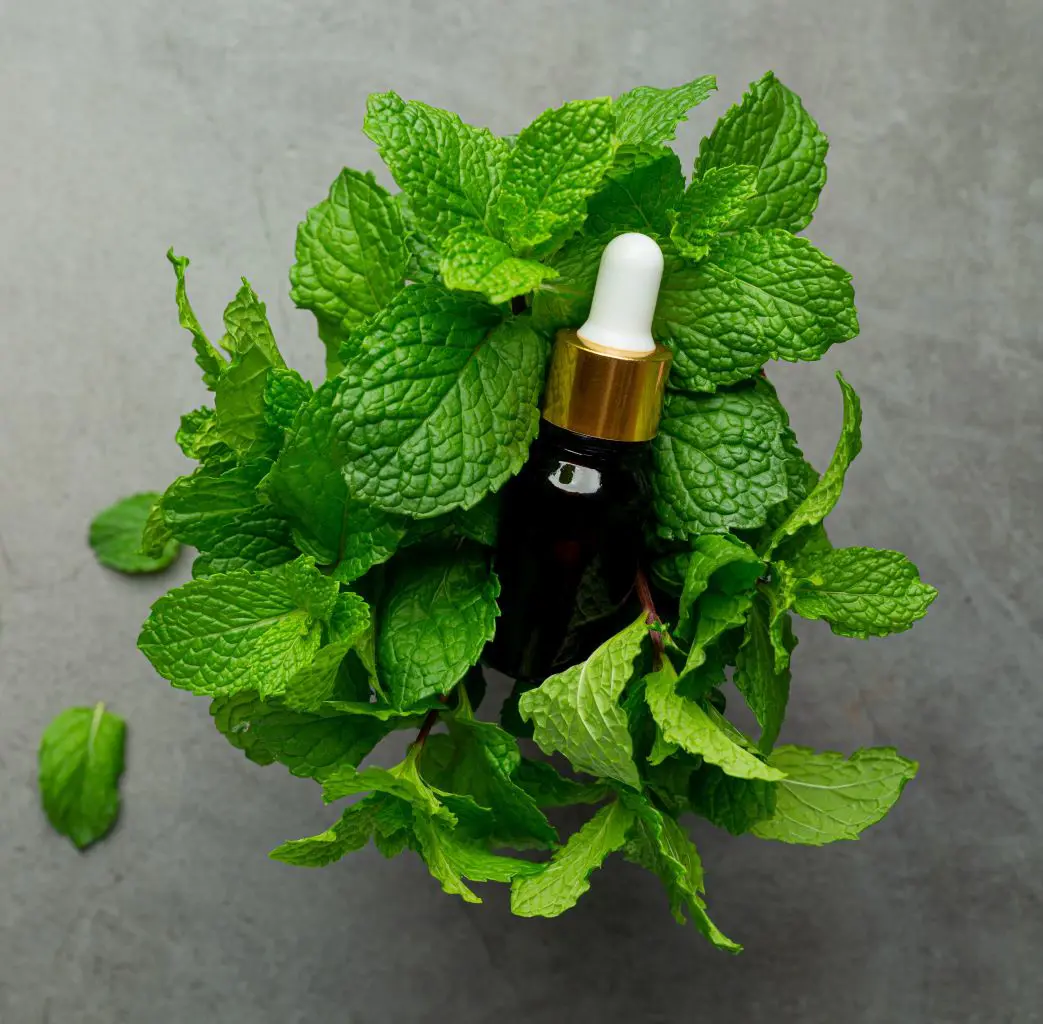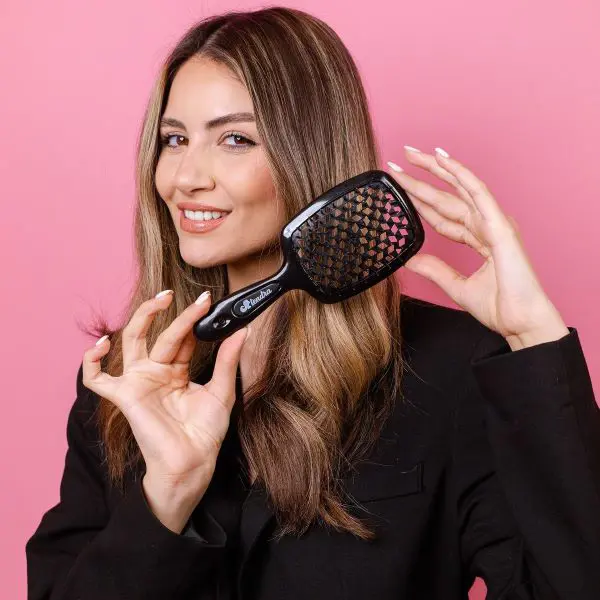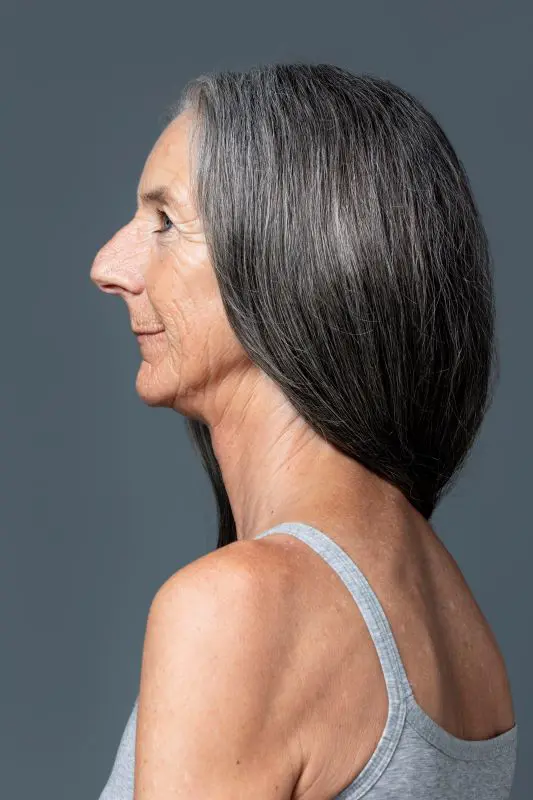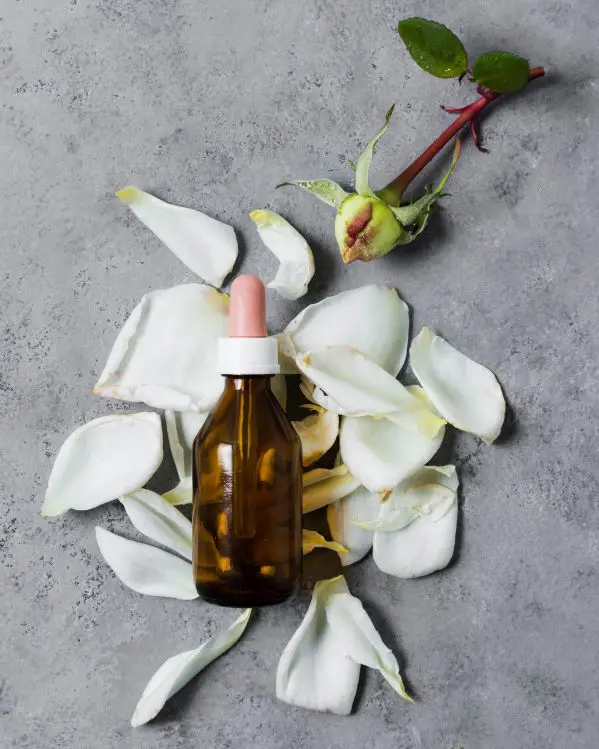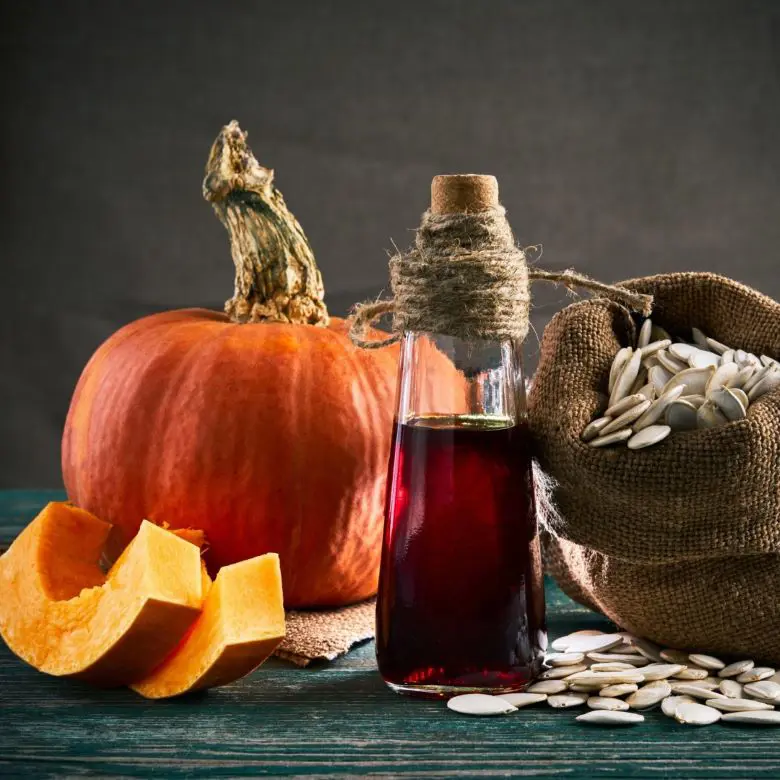Peppermint oil, with its invigorating scent and refreshing properties, is more than just a popular aromatherapy choice. Thanks to its natural compounds, peppermint oil stimulates the hair scalp and promotes healthy hair.
This oil is also rich in menthol, which helps to improve circulation, balance oil production, and soothe scalp irritation. In this guide, we’ll explore peppermint oil's key benefits for hair and provide practical tips on how to incorporate it into your hair care routine.
Benefits of Peppermint Oil for Hair
The presence of a variety of elements in peppermint oil, especially menthol and menthone, helps maintain good and healthy hair. Peppermint oil provides several benefits in the hair care field, which help to make our hair stronger and healthier.
Peppermint oil has been continuously used in hair care, such as scalp massage, shampoo or conditioner, hair mask, hair rinse, and other various hair-based applications. It benefits hair, either directly or indirectly.
The benefits of peppermint oil are as follows:
1. Stimulates Hair Growth
Peppermint Oil helps to stimulate hair growth by increasing blood circulation. Menthol in peppermint oil increases scalp circulation, also antimicrobial and anti-inflammatory properties of pepermint oil helps to promotes a healthy environment for follicles.
When peppermint oil are applied to the scalp, it causes blood vessels to dilate, which increases blood flow to hair follicles. This enhanced circulation delivers more oxygen and nutrients to the follicles, promoting healthier and faster hair growth.
2. Reduces Dandruff
Dandruff is the one of the most common hair problem in the world. Peppermint oil helps to reduce dandruff by soothing the scalp with its cooling and anti-inflammatory properties, while its antimicrobial effects combat the fungi and bacteria that can contribute to dandruff.
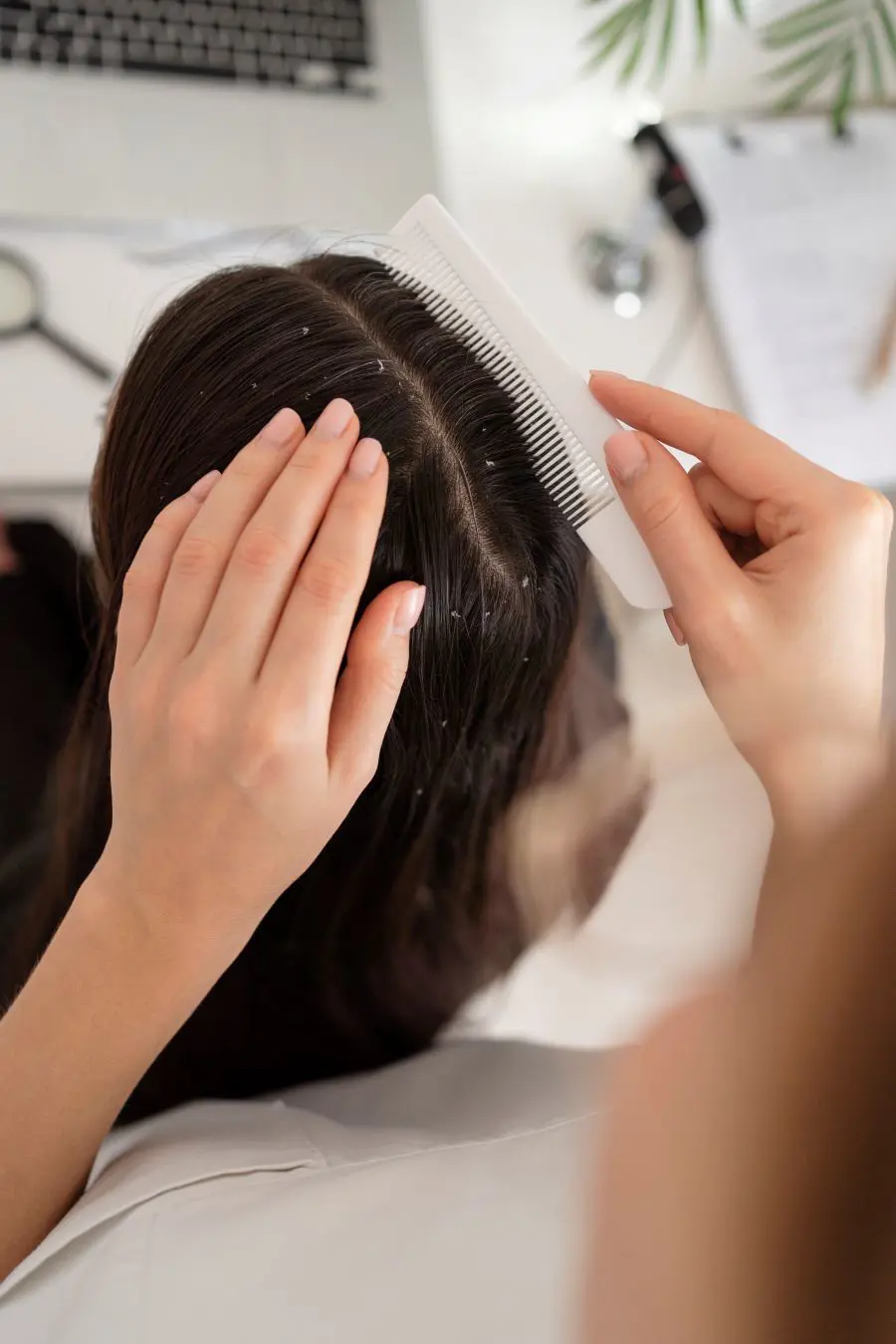
For reducing dandruff, peppermint oil can be used 2-3 times a week. It’s typically applied diluted in a carrier oil to the scalp before shampooing. Overuse may lead to irritation, so it's important to regulate your scalp's response and adjust frequency if needed.
3. Cools and Soothes Scalp
Peppermint oil is a volatile essential oil with a refreshing and cooling nature. Without using peppermint oil, achieving a cooling and soothing effect on the scalp can be more challenging, but it's still possible with other remedies.
Peppermint oil cools and soothes the scalp primarily due to its menthol content, which creates a cooling sensation that helps relieve irritation and inflammation. This cooling effect also helps reduce itching and discomfort, leaving the scalp feeling refreshed and calm.
4. Balances Scalp Oil Production
Peppermint oil helps regulate scalp oil production by balancing sebum levels, preventing both excess oiliness and dryness. This balanced oil production contributes to a healthier scalp and more manageable hair.
Scalp oil production is crucial for maintaining the health and appearance of hair, as it provides necessary moisture and shine while balancing scalp conditions. Too much oil can lead to greasy, weighed-down hair, whereas too little can cause dryness and irritation, both of which impact overall hair health and growth.
5. Strengthens Hair Follicles

Follicles are small, tube-like structures in the skin that surround and support the growth of hair. Each hair follicle contains the root of a hair, and it is responsible for producing and nourishing the hair strand as it grows
Peppermint oil strengthens hair follicles by improving blood circulation to the scalp, which enhances the delivery of nutrients and oxygen essential for follicle health. This increased blood flow can help fortify hair follicles, making them more resilient and better able to support strong, healthy hair growth.
6. Adds Shine and Softness
Peppermint oil helps to add shine and softness to hair primarily due to its menthol and antimicrobial properties. Menthol improves blood circulation to the scalp, which supports healthy hair growth and enhances texture. Its antimicrobial properties help maintain a clean, healthy scalp environment, preventing buildup that can make hair appear dull and less soft.
Shine and softness are essential for hair as they enhance its overall appearance, making it look healthy and vibrant. Regular and effective use of peppermint oil makes our hair more shiny and soft.
7. Refreshes Hair and Scalp
Refreshing hair and scalp is necessary to maintain overall hair health and comfort. It helps remove buildup of products, sweat, and impurities, which can lead to scalp irritation and dull-looking hair. A refreshed scalp promotes a healthier environment for hair growth, while refreshed hair feels more vibrant, clean, and manageable.
Peppermint oil's invigorating scent and cooling effect can helps hair and scalp feeling fresh and revitalized, especially after workouts or in hot weather.
8. Prevents Hair Loss
Hair loss is one of the major hair problems affecting many people. Hair loss can significantly impact self-esteem and quality of life, making it a prominent concern in both cosmetic and medical contexts.

Peppermint oil can reduce hair loss by improving scalp circulation, which nourishes hair follicles and supports stronger hair growth. Its soothing and antimicrobial effects also help create a healthier scalp, reducing factors that might lead to hair thinning and loss.
9. Detangles Hair
Peppermint oil helps to detangle hair by smoothing the hair cuticle, which reduces friction and makes hair easier to comb through. Its conditioning properties also enhance hair softness and manageability, minimizing tangles and breakage.
Detangling hair is necessary to prevent breakage and split ends caused by knots and tangles, which can damage the hair shaft and affect its overall health. It also ensures that hair remains manageable and smooth, making it easier to style and reducing the risk of pulling or tearing during brushing or combing.
10. Fights Scalp Infections
Peppermint oil helps to fight scalp infections through its antimicrobial properties, which combat bacteria, fungi, and other element that can cause infections. Additionally, its anti-inflammatory effects reduce irritation and inflammation on the scalp, creates a healthier environment which supports healing and prevents from further infection.
Regular and effective use of peppermint oil makes our scalp strong and healthier which can helps to cope with maximum scalp based infections.
How to Apply Peppermint Oil on Hair
Applying peppermint oil to your hair is vary based on user needs and preferences. It is necessary to know about the correct use of peppermint oil, which can significantly maximized the benefits, leading to stronger, healthier, and more vibrant hair.
The simple and most effective guides and steps to apply peppermint oil in hair are listed below.
Apply to Scalp
Before apply peppermint on scalp, first mix a few drops of peppermint oil with a carrier oil (like coconut or jojoba oil) in a small bowl. After mixing the peppermint and carrier oil in a proper ratio, use your fingers or a brush, and apply the diluted oil mixture directly to your scalp.
Gently massage the oil into your scalp in circular motions to ensure even coverage and stimulate blood flow. This helps promote healthy hair growth and soothe any irritation.
Distribute Through Hair
After treating your scalp, work the oil through the lengths of your hair. Start from the roots and move towards the ends, making sure to coat every strand. Focus especially on the ends of your hair, which are more prone to dryness and damage. This helps to nourish and hydrate your hair, reducing frizz and enhancing shine.
Comb Through
Employ a wide-tooth comb to spread the oil evenly throughout your hair. This action helps untangle the hair and reduces breakage, ensuring that all sections of your hair receive the benefits of the treatment.
Leave In
Allow the oil to absorb and take effect on your hair for 15-20 minutes. For more intense conditioning, leave it overnight. Cover your hair with a shower cap or towel to prevent the oil from transferring to your bedding and to enhance absorption.

Rinse and Shampoo
After applying peppermint oil, rinse it out of your hair using warm water to help dissolve the oil. Then, use a mild shampoo to cleanse your hair, possibly washing it twice to ensure all traces of the oil are removed. This will ensure your hair is completely clean and free of any residual oil.
Condition
Once you've shampooed, apply your usual conditioner to seal in moisture and enhance softness. Conditioning helps preserve your hair's hydration, ensuring it remains smooth, manageable, and looking its best.
Choosing a Peppermint Oil
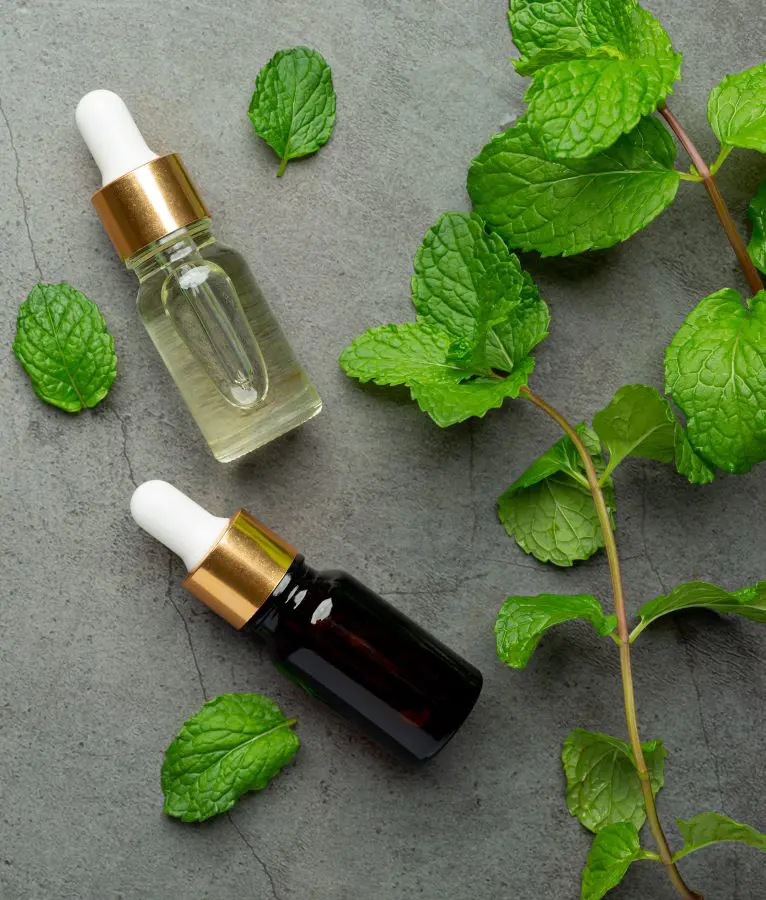
While choosing a peppermint oil, you should have to consider various factors according to your needs. Peppermint oil can be available in pure form, or in mixture with other ingredients and oils.
Some common types of peppermint oil are:
1. 100% Pure Peppermint Oil:
100% pure pepperment oil is the purest form of peppermint oil, with no any addition of other ingredients. It is suitable for people with oily scalps, individual experiencing hair loss, people with dandruff and scalp irritation, and people seeking natural hair care.
However, people with sensitive skin or scalp conditions should mix and use peppermint oil properly, and become ensure that they do not experience any adverse reactions when using 100% pure peppermint oil.
2. Organic Peppermint Oil:
Organic Peppermint oil are sourced from peppermint plants grown without use of any synthetic pesticides or fertilizers. It is suitable option for those who wants natural and eco-friendly peppermint oil option.
3. Peppermint Essential Oil:
Extracted through steam distillation, this is the most common form of peppermint oil. The peppermint essential oil can proved to be an effective natural solution for various hair and scalp concerns.
4. Peppermint Oil Blends:
These are peppermint oil blends mixed with other essential oils or carrier oils. They are tailored to meet the needs of different hair and scalp conditions, making them beneficial for a wide range of people looking to improve their hair health.
5. Peppermint Oil with Added Ingredients:
These products include additional ingredients for enhanced effects, such as menthol or other essential oils, tailored for particular uses or benefits. The peppermint oil is integrated with other ingredients, which can differ based on the user's needs, according to their hair and scalp conditions.
Wrongly choosing peppermint oil types can also adversely affect your hair and scalp, so when selecting peppermint oil, it’s important to choose the type that best suits your hair and scalp needs and condition. The correct selection of peppermint oil also helps to give better and more effective results to your hair and scalp.
Process of Extracting Peppermint Oil
Peppermint oil can be extracted from peppermint plants, and should be carefully extracted to ensure its purity and natural quality. There are several methods for extracting peppermint oil. The most common process of extracting peppermint oil typically involves steam distillation.
Here’s a step-by-step overview of the process of extracting peppermint oil using steam distillation.
1. Harvesting:
The first process invonved in extracting peppermist oil is harvesting the peppermint leaves and stems. The leaves and stems of peppermint plant are harvested when the plant's oil content is at its peak.
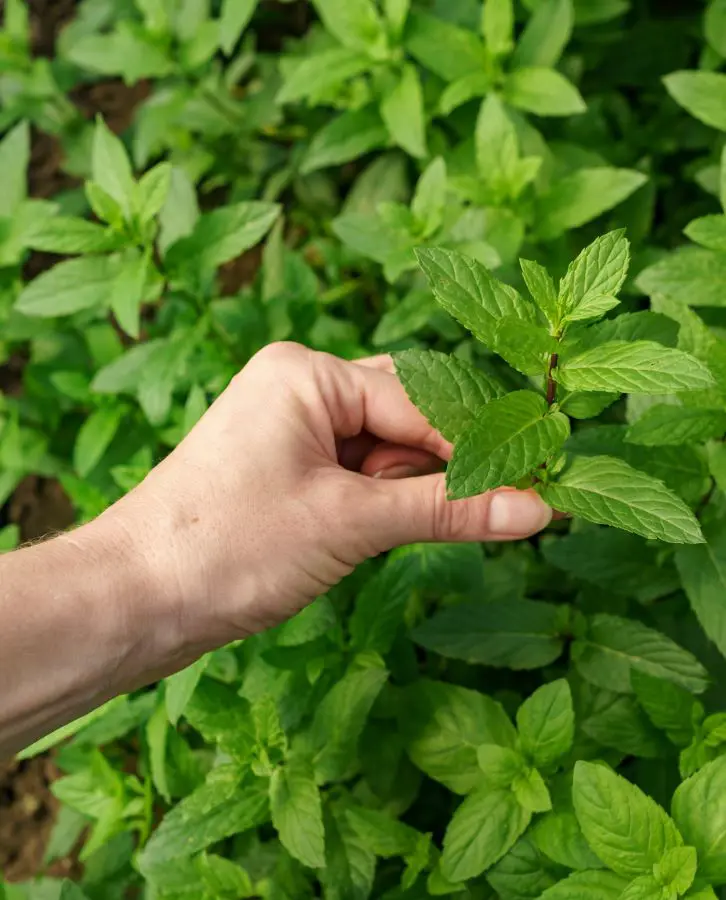
2. Preparation:
After harvesting peppermint, such harvested peppermint is cleaned and can be chopped to increase the surface area, which helps in the extraction process. They finally processed towards steam distillation process.
3. Steam Distillation:
In steam distillation, there involves process of steaming, condensation and separation.
-
Steaming: In steaming, the prepared peppermint is placed in a distillation apparatus where steam is passed through the plant material. The heat from the steam helps to release the essential oil from the peppermint leaves.
-
Condensation: In condensation, the steam carrying the essential oil passes through a condenser, where it gets cool and turns back into a liquid.
- Separation: In the final steps of steam distillation, the oil and water mixture is collected in a separator. In separator, due to lower density of peppermint oil then water, the peppermint oil floats above the water and finally separated.
4. Collection:
The separated peppermint oil from the water during separation process is now collected into dark glass bottles to protect it from light and preserve its potency.
5. Filtering:
The collected peppermint oil may still contains some impurities and residual. In filtering, the peppermint oil is filtered to remove any impurities or plant material residues.
6. Storage:
FInally after filtering, such collected peppermint oil is stored in a cool, dark place to maintain its quality until they are taken for any use.
Such extracted peppermint oil which are obtained, with steam distillation process ensures that the peppermint oil retains its natural properties and is suitable for use in various areas.
Can We Make Peppermint Oil at Home?
Yes, We can make peppermint oil at home using a simple method i.e Home Extraction Method, though it won’t be as concentrated as commercially extracted oils.
Here’s is the steps for making peppermint oil at home:
1. Prepare Ingredients:
First, collect the peppermint leaves and chop fresh peppermint leaves or crush dried leaves to release their essential oils. This helps to increase the surface area and enhances the infusion process.
2. Warm Carrier Oil:
After preparing the ingredients, heat a carrier oil, such as olive or coconut oil, using a double boiler or a heatproof bowl over simmering water. To avoid oveheating, make sure that oil is heating in a normal required temperature.
3. Combine:
When the warming of carrier oil is finished, place the prepared herbs in a clean jar and pour the warmed oil over them. While placing the herbs, we have to make sure that the herbs are fully submerged. This helps the oil to absorb the herb's properties.
4. Infuse:
In infusion process, seal the jar tightly and store it in a warm, sunny spot for 1-2 weeks. Shake the jar gently each day to help with the infusion process.
5. Strain:
After the infusion period, strain the oil through a fine mesh strainer or cheesecloth into a clean, dark glass bottle. Discard the herb remnants to leave only the infused oil.
6. Store:
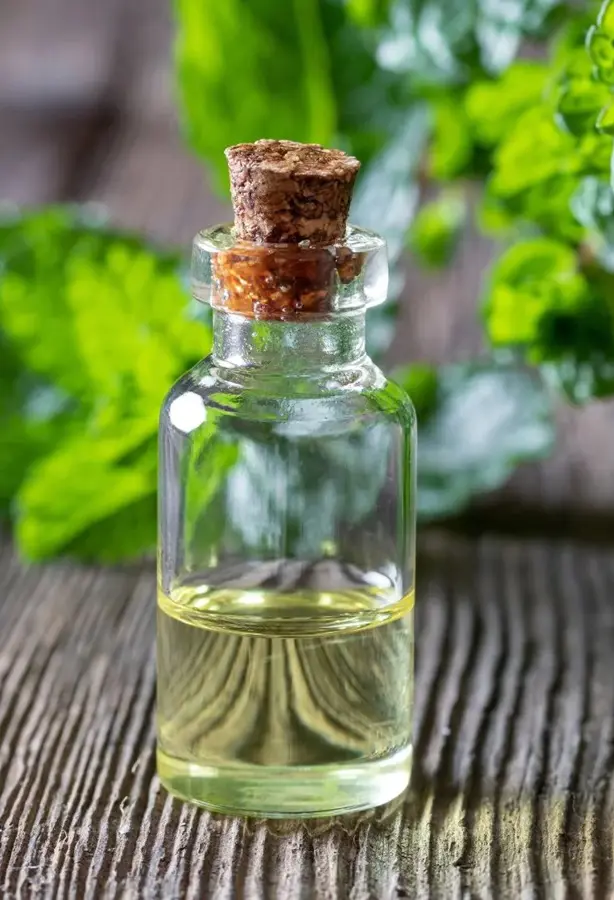
In the final steps of the home extraction method of peppermint plant, we keep the infused oil in a cool, dark place to maintain its quality. Such prepared oil can be used anytime for hair care applications.
By following the above steps, we can prepare the peppermint oil at home. However we have to be more careful while following the steps for preparing the peppermint oil, otherwise the result may come different then we expected.
This method creates a peppermint-infused oil rather than pure essential oil. It’s suitable for topical use and can be used in homemade haircare products. For more concentrated peppermint oil, steam distillation is required, which is typically done using specialized equipment.


